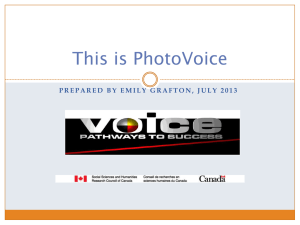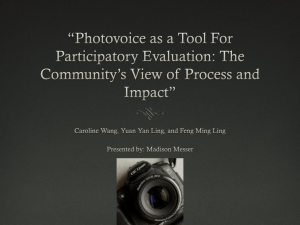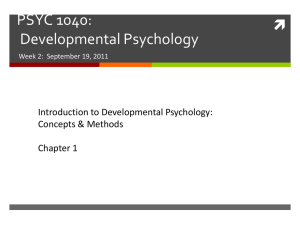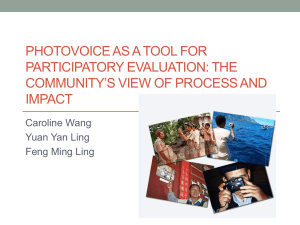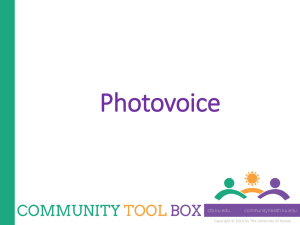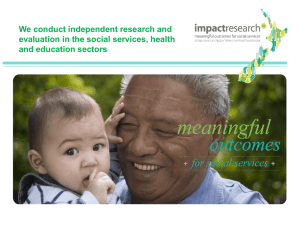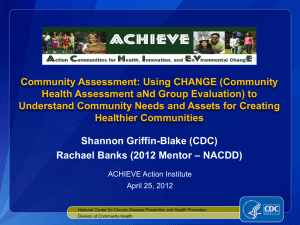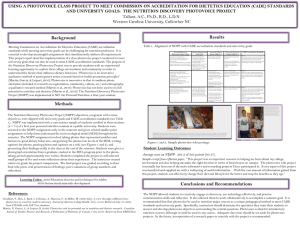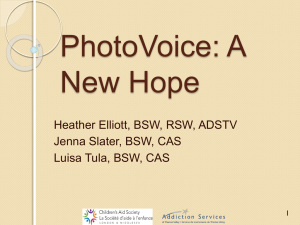three - Massachusetts Farm to School
advertisement
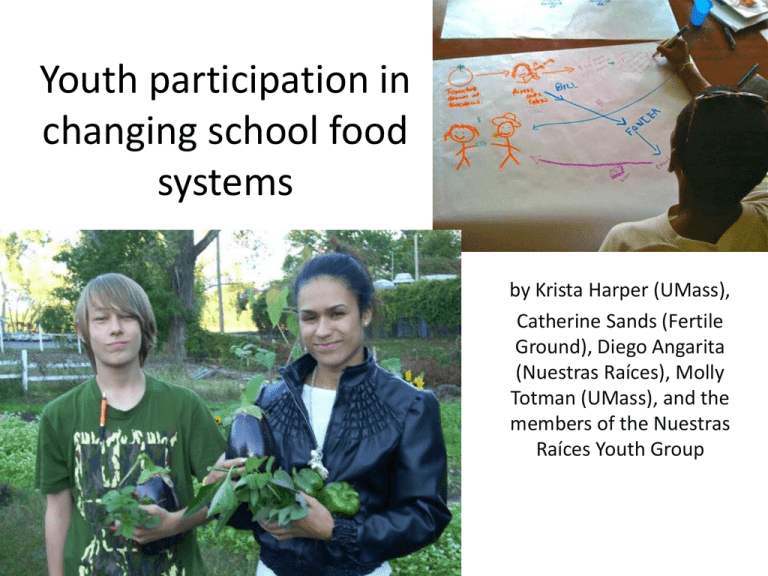
Youth participation in changing school food systems by Krista Harper (UMass), Catherine Sands (Fertile Ground), Diego Angarita (Nuestras Raíces), Molly Totman (UMass), and the members of the Nuestras Raíces Youth Group Preview • Transforming school food systems • Studying youth participation using Photovoice • Photovoice in Holyoke, Massachusetts – Nuestras Raíces youth program • Participatory visual research and food justice youth development (FJYD) • Conclusions Transforming school food systems • School meals – “Commodity-food” system – Health resource for children and youth • Farm-to-school – Changing institutional procurement policies Studying youth participation • Photovoice research (Wang 1999) – Photo = youthgenerated images – Voice = discussion of images, captions – Audience = presenting research to wider public, policymakers Research Setting • Holyoke, Massachusetts – Early industrial city – 85% of students qualify for free/reduced school lunch – 70% of students identify as Latino • Nuestras Raíces – Community development org. since 1992 – Growing concern about access to and quality of food in Holyoke – Urban gardens and La Finca community farm – Youth leadership group Nuestras Raíces Photovoice • Youth group – Food justice focus • Holyoke Food and Fitness Policy Council • Farm-to-school • School lunch quality • Gaining a voice in decisions – Photovoice project • Documenting path of food from community farm to students’ plates in school cafeteria Step 1: Food is grown at La Finca © 2010 Nickolas Alger Step 2: Nuestras Raices Farm Manager contacts School Chef © 2010 Dorimar Rivera Step 3: Food is picked up at farm & delivered to local warehouse © 2010 Monica Maitin Step 4: Food delivered to warehouse and distributed to Holyoke schools © 2010 Dorimar Rivera Step 5: Food is prepared and served at Holyoke Public Schools © 2010 Jennifer Gonzalez Presentation to School Committee Policy window of food service contract: “We care about healthy food.” “Students should have a say in decisions about what we eat at school.” “When kids have a chance to try healthy foods, we learn to like them.” Exhibition and FEEST! Food Justice Youth Development • Ginwright and Cammarota’s “Social Justice Youth Development” • Using Photovoice to build youth awareness and outcomes at three levels – Individual – Social – Global FJYD: Individual level Youth assert themselves against boring after-school meetings with no snacks! FJYD: Social level • Analysis of “big P” and “little p” policies • Identifying decisionmakers and stakeholders • Presenting to Holyoke School Committee FJYD: Global level Connecting school food + labor: NR youth meet Coalition of Imokalee Workers (CIW) Connecting school food as a “push-out” factor Nuestras Raíces Youth Photovoice: Conclusion Through Photovoice process, youth gained: – research skills – knowledge of food system; farm-toschool vs “commodity food” – policy savvy – representation on School Food Task Force – Individual, social, and global awareness as food justice activists Thank you! Contact information: kharper@anthro.umass.edu chsands@fertilegroundschools.org diego.angarita@gmail.com
